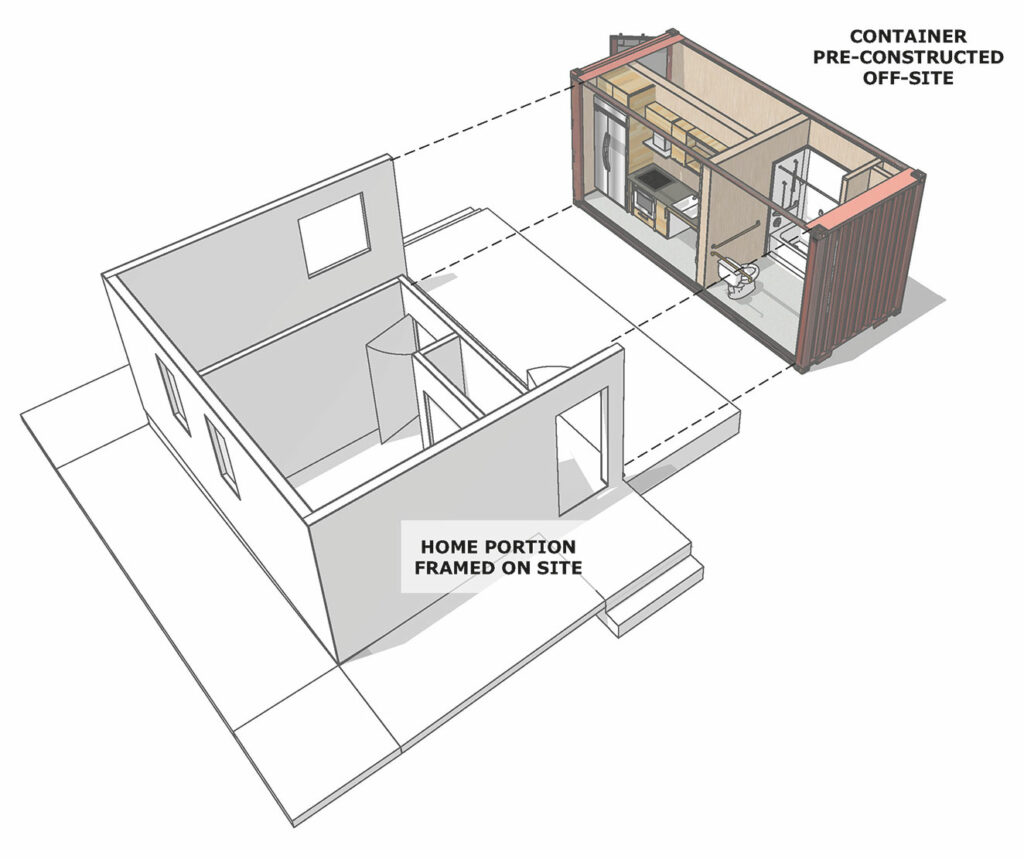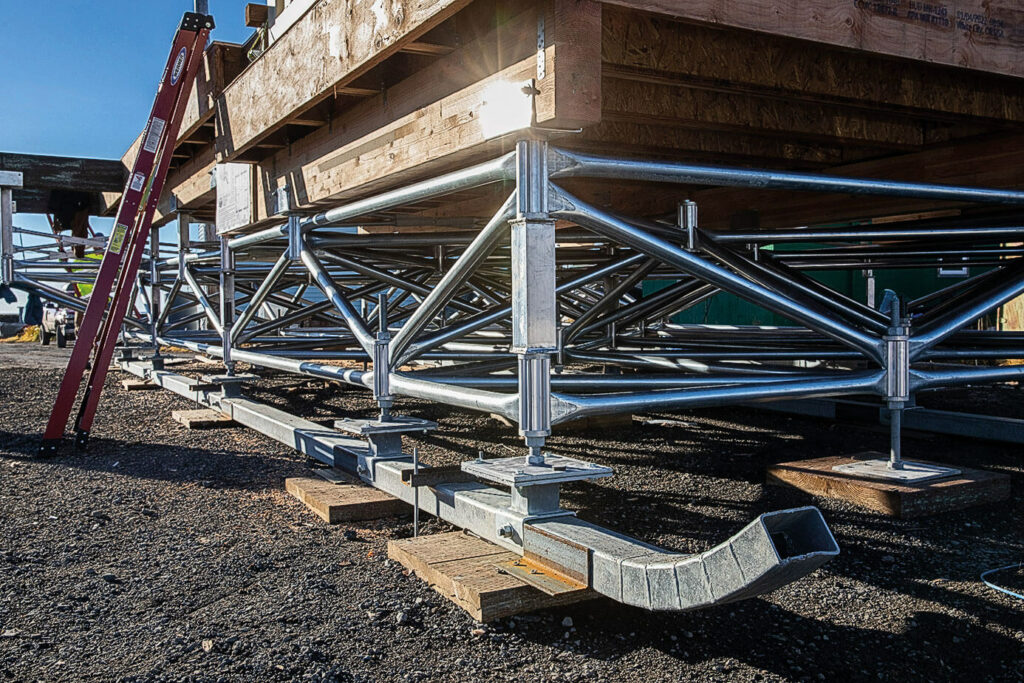© Werner Slocum / NREL
Cold climate housing research
Partnering with an Alaskan Native village to design climate-resilient homes
MOLLY RETTIG describes an innovative partnership between the National Renewable Energy Laboratory and an Alaskan community to co-create sustainable, resilient buildings that can withstand the rigours of the Arctic climate.
Last September, Damien Williams awoke in the middle of the night to 100 km/hour winds blowing around his house in Unalakleet, Alaska and the sound of huge waves crashing against the coast. He jumped in his truck and drove a few blocks to the barge landing, where construction materials were being stored for a house he was building.
He was able to move the materials to a safe location before they were blown away—which is fortunate because by the next morning, the barge landing was gone.
Over the course of that weekend, Typhoon Merbok slammed the western coast of Alaska, flooding villages, tearing down power poles, and washing away roads and buildings. Unalakleet fared better than many of its neighbours, thanks to a sea wall built in 2010. But the wall won’t be enough. As the climate warms and the sea ice retreats, Unalakleet, like many Arctic communities, is planning to relocate to protect itself from intensifying storms.
“We’re seeing it all over western Alaska,” says Williams. “People are thinking about getting to a safer place on higher ground.”
On an unseasonably warm day last October, I found Williams walking a gravel pad where his crew was installing floorboards for a new home. The house was the result of a partnership between the Native Village of Unalakleet and the National Renewable Energy Laboratory (NREL) to create affordable, energy-efficient housing, use local labour, and—perhaps most urgently—invest in mobile infrastructure. The village can go ahead with building these new homes despite its plans to relocate because the houses are designed to be moved.
Williams crouched along the foundation of webbed steel that elevated the house a metre or two off the ground. Running along the bottom of the foundation were three strips of steel that looked a lot like skis. Unalakleet doesn’t have a company that can move buildings, but this house has skids so it can be hitched to a truck and towed.
Technology that reflects culture, knowledge and needs
Not far from the building site, all-terrain vehicles zipped around gravel roads and children played on the rocky beach. Unalakleet has fewer than 800 residents, primarily Alaska Native people, and consists of a patchwork of brightly coloured homes and weathered shacks, fishing boats and wooden racks draped in animal hides and moose antlers. While this region is incredibly rich in natural resources, it’s an expensive place to build, a fact that has led to housing stock that is old, overcrowded and very expensive to heat.
But the new demonstration home that Williams is working on will be extremely efficient. With six inches of foam insulation wrapped around its walls, it is expected to use 80 percent less energy than the average Arctic home.
Its construction is also taking advantage of local labour. While Alaskan villages have typically imported prefabricated homes in hopes of saving money, doing so takes precious jobs out of the community—and doesn’t actually save much money.
© Vern Slocum / NREL
Jobs for local people
While Unalakleet doesn’t have specialized tradespeople like plumbers and electricians, there are plenty of skilled carpenters. So, researchers built the bathroom and kitchen inside a shipping container in NREL’s Fairbanks lab, where parts and labour were readily available, and the community built the rest of the home around it.
The home arrived with highly efficient appliances installed, including an air source heat pump water heater and heat recovery ventilator. When the Bering Sea ice thawed, the container was shipped to Unalakleet. Then Williams and his crew used a boom truck to set the fully equipped container onto the elevated floor deck and finish the construction.
“You do the village a disservice if you take away all the jobs just to address the housing crisis,” says NREL architect Aaron Cooke. “You end up exacerbating one problem by addressing another.”
Equitable technology in action
This semi-modular approach reduces the cost of housing while making the village more resilient. Researchers hope the approach will expand beyond Unalakleet to help communities in the Arctic and elsewhere that are facing similar challenges.
“What we’re building here could change the future of this town, of all the towns around here,” Williams says.
Back at the building site, Williams handed a sheet of plywood up to another carpenter. Then he climbed the ladder and finished building the floor of a home that will, one day, sit on the hillside.
MOLLY RETTIG is a writer at the. National Renewable Energy Labrartory's Alaska campus and author of Finding True North: Firsthand Stories of the Booms that Built Modern Alaska. She focuses on energy efficiency and clean energy in extreme climates and frontline communities.

